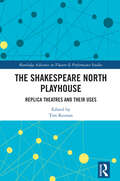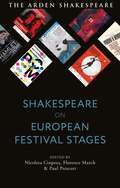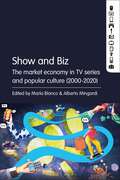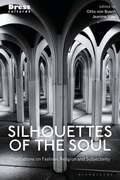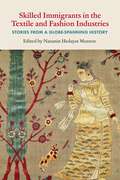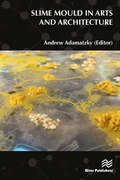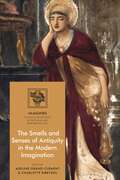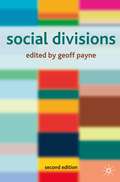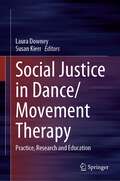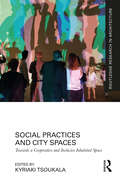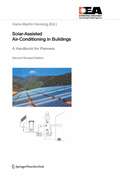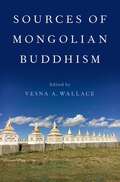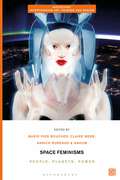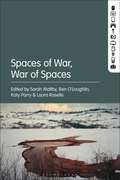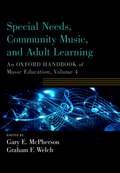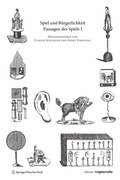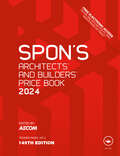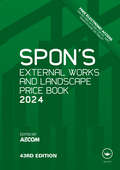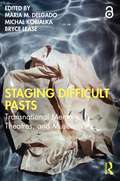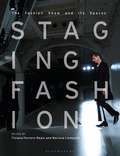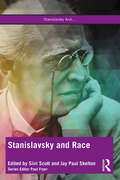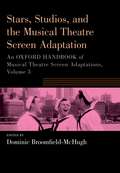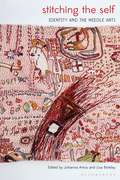- Table View
- List View
The Shakespeare North Playhouse: Replica Theatres and Their Uses (ISSN)
This collection celebrates the opening of the Shakespeare North Playhouse (SNP). After discussion of its genesis and development by four people pivotal to its progress at different stages of the project, this book explores different aspects of the SNP’s purpose and functions across three broad categories: buildings and spaces, practices and performance, and community arts and education. Various chapters offer answers to fundamental questions about replica theatres, including: Why do we build them? What do they do? How do we use them? In the course of these discussions, the purposes, potential, and programming of the SNP are discussed in relation to other Globe-type replicas in the UK and beyond. Contributors to this collection analyse key academic and practice-based concerns within their fields of expertise connected to the use (and misuse) of replica theatres to suggest the ways in which they can be used to drive research and practice in contemporary Shakespearean performance, connect with young people, and serve local communities.This book will appeal to academics, students, and practitioners interested in historical and contemporary approaches to Shakespeare in the fields covered. It should also appeal to general readers with an interest in the topics, particularly in Merseyside and the North-West region.
Shakespeare on European Festival Stages
From the aftermath of World War II to the convulsions of Brexit, festivals have deployed Shakespeare as a model of inclusive and progressive theatre to seek cultural solutions to Europe's multi-faceted crises. Shakespeare on European Festival Stages is the first book to chart Shakespeare's presence at continental European festivals. It examines the role these festivals play in European socio-cultural exchanges, and the impact festivals make on the wider production and circulation of staged Shakespeare across the continent. This collection offers authoritative, lively and informed accounts of the production of Shakespeare at the following festivals: the Avignon Festival and Le Printemps des comédiens in Montpellier (France), the Almagro festival (Spain), Shakespeare at Four Castles (Czech Republic and Slovakia), the International Shakespeare Festival in Craiova (Romania), the Shakespeare festivals in Elsinore (Denmark), Gdansk (Poland), Gyula (Hungary), Itaka (Serbia), Neuss (Germany), Patalenitsa (Bulgaria), Rome and Verona (Italy).Shakespeare on European Festival Stages is essential reading for students, scholars and practitioners interested in Shakespeare in performance, in translation and in a post-national Shakespeare that knows no borders and belongs to all of Europe.
Show and Biz: The market economy in TV series and popular culture (2000-2020)
How is capitalism represented in popular culture today? Are profits seen as a legitimate reward of entrepreneurship? Are thrift and effort still considered a cornerstone of a healthy society? Or is it that inequalities are eliciting scandal and reproach? How is the ecosystem portrayed, vis-à-vis profit seeking companies? Are they irreconcilable, or maybe not? Are there any established trends with respect to the presentation of entrepreneurship, and that complex legal artefact that is the modern limited liability company? These are questions that will be at the core of this book. But they are not examined through the usual theoretical point of references, but looking at TV series produced in 2000-2020. Each chapter of this book is a case studies, covering some of the most popular, successful and engaging TV shows of the last 20 years. And showing how deep economic ideas and biases lie, at the roots of some of our times' most successful entertainment products.
Silhouettes of the Soul: Meditations on Fashion, Religion, and Subjectivity (Dress Cultures)
What is the relationship between the soul, or inner life, and what we wear in the making of identity and belief? What bearing do religious and political belonging, respectability, and resistance have on the way in which we dress? Why have more traditional religious practices been so prescriptive about body adornment? Historically, fashionable dress and religion have been positioned as polar opposites. Silhouettes of the Soul brings them together, placing them in conversation with each other. By moving beyond traditional, social scientific, and historical analysis of religious attire and adornment the book presents a variety of disciplinary approaches from across regional, social, and religious locations.Contentious and challenging, as well as academically rigorous, the book's diverse range of contributors - from fashion and religious studies scholars, to designers, activists, monastics, and journalists - explore the relationship between religion and fashion, extending the meanings and possibilities of both dress and spirituality. Combining interviews and personal stories with more traditional theoretical analysis, Silhouettes of the Soul offers new ways of looking at the relationship between religion, personal convictions, and self-expression - our sense of self and our sense of fashion.
Skilled Immigrants in the Textile and Fashion Industries: Stories from a Globe-Spanning History
With contributions from leading experts, this edited collection presents original research on the skills brought by immigrant communities to the textile and fashion industries, from the early modern to postmodern periods in Asia and the Islamic World, Europe, Africa, and the Americas.Manufacturing of textiles and apparel is arduous work, which historically depended on skilled artisans, inexpensive labor, and the introduction of labor-saving technology. Immigrant communities supplied much of the work force, bringing their own skill sets to new locations, leading to the development of new manufacturing centers and an increase in both production and technical expertise. Throughout the volume, the role of migration and immigrant involvement in manufacturing is also examined in relation to trade, politics, and socio-religious circumstances prompting relocation.Deconstructing the question of provenance by examining the cultural identity of migrant populations, the research brings to light ongoing dilemmas and practices of diaspora communities. By analyzing material, mythical, and technical aspects of textile and apparel production, contributors create a new narrative about textile- and garment-making as a collective endeavor, requiring diversity of skill and methodology to thrive.
Slime Mould in Arts and Architecture
The slime mould Physarum polycephalum was a source of explosive growth of bioengineered hybrid sensing and computing devices in the past decade. Being in its vegetative state, the plasmodium, the slime mould configures its protoplasmic network to optimize its geometry with relation to patterns of attractants and repellents.The slime mould’s adaptability, polymorphism and aestheticism inspired artists and architects. The slime mould has been seen as a self-conscious liquid form continuously changing its shape in response to external stimulation and due to interactions of thousands of micro-oscillators in its body. Elusiveness is a magic feature of the slime mould. One moment the slime mould gives you a solution to a mathematical problem by a shape of its body, next moment it changes its shape and the solution ,disappears.Slime Mould in Arts and Architecture presents a set of unique chapters written by leading artists, architects and scientists, which resulted from creative translations of the slime mould behaviour into forms and sounds, unconventional investigations and sensorial experiences and the slime mould ability to remove boundaries between living and artificial, solid and fluid, science and arts. The book gives readers unique tools for designing architectural forms and creative works using the slime mould, understanding how pro-cognitive living substrates can be used in everyday life, it sparks new ideas and initiates further progress in many fields or arts, architecture, science and engineering.
The Smells and Senses of Antiquity in the Modern Imagination (IMAGINES – Classical Receptions in the Visual and Performing Arts)
This volume tackles the role of smell, under-explored in relation to the other senses, in the modern rejection, reappraisal and idealisation of antiquity. Among the senses olfaction in particular has often been overlooked in classical reception studies due to its evanescent nature, which makes this sense difficult to apprehend in its past instantiations. And yet, the smells associated with a given figure or social group convey a rich imagery which in turn connotes specific values: perfumes, scents and foul odours both reflect and mould the ways in which a society thinks or acts. Smells also help to distinguish between male and female, citizens and strangers, and play an important role during rituals. The Smells and Senses of Antiquity in the Modern Imagination focuses on the representation of ancient smells - both enticing and repugnant - in the visual and performative arts from the late 18th century up to the 21st century. The individual contributions explore painting, sculpture, literature and film, but also theatrical performance, museum exhibitions, advertising, television series, historical reenactment and graphic novels, which have all played a part in reshaping modern audiences' perceptions and experiences of the antique.
Social Divisions
Society consists of people sharply divided from one another, living different lives and with distinct identities. This updated and expanded second edition of a successful text explores each of the social divisions. The book includes three major new chapters, on religion, poverty and elites and is written by leading academics in each field.
Social Justice in Dance/Movement Therapy: Practice, Research and Education
This book demonstrates the use of dance/movement therapy to directly counteract social injustices and promote healing in international settings. It also demonstrates the potential for dance/movement therapy in prevention and wellness in clinical and community settings. The use of improvisational and creative dance is presented throughout the book as a tremendously clear, strong and powerful inroad to healing in every setting. The chapters in this book do not directly address social justice in dance/movement therapy, but rather provide provoking social justice related positions. This call for a provoking re-examination of the definition of dance/movement therapy is fitting as we—as a community—challenge our identity as dance/movement therapists, educators, supervisors and as human beings who have internalized oppression in various forms through our many identifiers and the unique intersections of those identifiers. The editors and authors posit that social justice cannot be fully addressed by focusing solely on the social issues. Rather, we must be aware of where and how the social issues come into the individual(s), the setting, and the therapy process itself.Chapter “‘Breaking Free': One Adolescent Woman's Recovery from Dating Violence Through Creative Dance" is available open access under a Creative Commons Attribution 4.0 International license via link.springer.com.
Social Practices and City Spaces: Towards a Cooperative and Inclusive Inhabited Space (Routledge Research in Architecture)
This book examines the relationship between social practices and built space, focusing on current cooperative/participative and posthuman approaches to its production and management. From a social-cultural-and-ecological perspective, it explores the modes of engagement of all factors in the constitutional processes of inhabited space. Throughout this interdisciplinary collection, built space is reconsidered in the light of other schools of thought such as philosophy, anthropology, social sciences and political theories and practices. It covers new ground at conceptual, epistemic and methodological levels, focusing on inhabited space from within the framework of globalisation, biopolitics, cultural changes, environmental crisis and new technologies. Organised into three parts, Parts 1 and 2 focus on the role of architects in the emergence of a new ethos for habitation, as well as the modalities of the inclusion of differences in design, discussing the importance of participation and narrative at a theoretical and practical level in architecture. In the third part, the chapters delve into questions regarding the intersection of design, ecology and technoscience in a posthuman approach, which might support the inclusion of differences in design and the emergence of a new environmental ethos. Providing a stimulating landscape of arguments and challenges to new readings of architecture, society and the environment, this book will be of interest to researchers, students and professionals of architecture, urban planning, anthropology and philosophy.
Solar-Assisted Air-Conditioning in Buildings: A Handbook for Planners
Air conditioning contributes significantly to the energy consumption of buildings in many countries. A promising possibility for energy reduction is the use of solar thermal energy in solar-assisted air conditioning systems. The main advantage of this technology is that cooling loads and solar gains occur at the same time, at least on a seasonal level. However, until today only a few systems have been installed world-wide and design and operation experiences are fairly poor. The goal of this handbook - meanwhile available in the 2nd edition - is to address this lack and to support the planner in the design of solar assisted air-conditioning systems, which use solar collectors as heat source.
Sources of Mongolian Buddhism
Despite Mongolia's centrality to East Asian history and culture, Mongols themselves have often been seen as passive subjects on the edge of the Qing formation or as obedient followers of so-called "Tibetan Buddhism," peripheral to major literary, religious, and political developments. But in fact Mongolian Buddhists produced multi-lingual and genre-bending scholastic and ritual works that profoundly shaped historical consciousness, community identification, religious knowledge, and practices in Mongolian lands and beyond. In Sources of Mongolian Buddhism, a team of leading Mongolian scholars and authors have compiled a collection of original Mongolian Buddhist works--including ritual texts, poetic prayers and eulogies, legends, inscriptions, and poems--for the first time in any European language.
Space Feminisms: People, Planets, Power (Biotechne: Interthinking Art, Science and Design)
Employing a global approach to feminist theory, this book examines how scientific, popular, scholarly, and artistic imaginations of space have, since the 1950s, reflected and embedded Earthly hopes, anxieties, and futures.Rather than simply a platform for imagining the future, it cultivates radical and alternative modes of inquiry around space through seeing space as a material reality that reflexively encodes humans' self-perceptions of their planet and beyond. Bringing together essayistic reflections, artworks, and interviews with space scientists, engineers, and astronauts past and present in one volume, Space Feminisms inspects the transformation of terrestrially held notions of gender, race, class, and ableism as they migrate to the extraterrestrial, whilst drawing new connections between feminist thought and extraterrestrial power structures.Space Feminisms makes a radical enquiry into how earthly power structures are already expanding into our skies, facilitating a collaborative and interdisciplinary platform for scholars, artists, and designers to imagine radical constructions of human futures beyond Earth. At the intersection of scientific, cultural, social, and artistic speculations, the book gathers leading scholars, scientists, artists, and designers to develop innovative tactics and disruptive participations to create generative, alternative, and radical futures of and in space.
Spaces of War, War of Spaces
Spaces of War, War of Spaces provides a rich, international and multi-disciplinary engagement with the convergence of war and media through the conceptual lens of 'space'. 'Space' offers a profound, challenging and original framework through which notions of communication, embodiment, enactment, memory and power are interrogated not only in terms of how media spaces (traditional, digital, cultural, aesthetic, embodied, mnemonic) transform the conduct, outcomes and consequences of war for all involved, but how 'war' actors (political, military, survivors, victims) recreate space in a manner that is transformative across political, social, cultural and personal spheres. Foregrounding the work of artists, activists and practitioners alongside more traditional scholarly approaches Spaces of War, War of Spaces engages with the 'messiness' of war and media through the convergence of practice and theory, where showing and embodying is made explicit.
Special Needs, Community Music, and Adult Learning: An Oxford Handbook of Music Education, Volume 4 (Oxford Handbooks)
Special Needs, Community Music, and Adult Learning is one of five paperback books derived from the foundational two-volume Oxford Handbook of Music Education. Designed for music teachers, students, and scholars of music education, as well as educational administrators and policy makers, this fourth book in the set focuses on issues and topics that help to broaden conceptions of music and musical involvement, while recognizing that development occurs through many forms. The first section addresses music education for those with special abilities and special needs; authors explore many of the pertinent issues that can promote or hinder learners who share characteristics, and delve deep into what it means to be musical. The second section of the volume addresses music as a shared, community experience, and the diverse and constantly evolving international practice of community music. The chapters in the third section provide evidence that the process of music education exists as a lifelong continuum that encompasses informal, formal, and non-formal methods alike. The authors encourage music educators to think in terms of a music learning society, where adult education is not peripheral to the priority of other age groups, but is instead fully integral to a vision for the good of society. By developing sound pedagogical approaches that are tailored to take account of all learners, the volume endeavors to move from making individual adaptations towards designing sensitive 'universal' solutions. Contributors Carlos R. Abril, Mary Adamek, Kenneth S. Aigen, Chelcy Bowles, Mary L. Cohen, William M. Dabback, Alice-Ann Darrow, John Drummond, Cochavit Elefant, David J. Elliott, Lee Higgins, Valentina Iadeluca, Judith A. Jellison, Janet L. Jensen, Patrick M. Jones, Jody L. Kerchner, Thomas W. Langston, Andreas C. Lehmann, Katrina McFerran, Gary E. McPherson, David Myers, Adam Ockelford, Helen Phelan, Andrea Sangiorgio, Laya H. Silber, Marissa Silverman, Rineke Smilde, David S. Smith, Kari K. Veblen, Janice Waldron, Graham F. Welch
Spiel und Bürgerlichkeit: Passagen des Spiels I (Edition Angewandte)
Spiele verändern sich. Sie sind der Wunsch- und Zerrspiegel jeder Gesellschaft, die sie spielt. In der Kultur der Bürgerlichkeit geraten viele Spiele in eine „Zone wachsamer Aufmerksamkeit" (D. Kühme) und sind einem vielgestaltigen kulturellen Transformationsprozess unterworfen: Spiele werden missliebig oder verboten, sie werden lehrreich und schön, ihre Obszönität wird domestiziert oder ihr Betrieb verstaatlicht."Spiel und Bürgerlichkeit" ist den Veränderungen in der Grammatik und Semantik der Spiele gewidmet. Die Beiträge reichen von Cardanos Theorie des Glücksspiels in der frühen Neuzeit, den Karten-, Brett- und Gesellschaftsspiele im Bürgertum, dem Aufstieg und dem Verschwinden der Lotterien, über die Betrachtung der Geschlechterrollen im Spiel und der Funktion von Spielervereinigungen bis zur Analyse der Topografie und Architektur der Kasinos am Mississippi zu Zeiten Mark Twains.Ergänzt wird das Werk durch eine ausführliche Bild- und Lesestrecke, die Einschau ins Archiv der bürgerlichen Spiele nimmt und seltene Bilder und Textauszüge aus Spielebüchern und -traktaten der Zeit präsentiert.
Spon's Architects' and Builders' Price Book 2024 (Spon's Price Books)
SPON’S ARCHITECTS’ AND BUILDERS’ PRICE BOOK 2024, compiled by AECOM, still provides the most accurate, detailed and professionally relevant construction price information for the UK. Its unique Tender Index, updated through the year (2015 = 100), gives an ongoing reality check and allows you to adjust for changing market conditions. Although it suits a wide range of project sizes, this is the only price book which sets out a detailed cost base for contracts exceeding £4,000,000 in value. Use the access code inside the front cover of the book to get set up with an ebook of this 2024 edition on the VitalSource® Bookshelf platform, available for access and use until the end of December 2024. For the 2024 edition: All prices have been updated via comprehensive supplier engagement combined with AECOM’s market intelligence and a short-term inflationary forecast to ensure you have the most accurate cost data available Activity descriptions and build ups have been updated to reflect changes to standard specifications, Building Regulation changes and emerging practices and changing outputs Along with the standard features you have come to expect from SPON’S ARCHITECTS’ AND BUILDERS’ PRICE BOOK: 20,000 prices for the most frequently specified items, the majority with labour constants and detailed build-ups Hundreds of alternative materials prices for the more unusual items Detailed guidance on wage rates, daywork, cost limits and allowances, property insurance and professional fees, plus useful formulae, design criteria and trade association addresses Updates free of charge – see inside for registration details. Updates are available online at www.pricebooks.co.uk
Spon's Architects' and Builders' Price Book 2024 (Spon's Price Books)
SPON’S ARCHITECTS’ AND BUILDERS’ PRICE BOOK 2024, compiled by AECOM, still provides the most accurate, detailed and professionally relevant construction price information for the UK. Its unique Tender Index, updated through the year (2015 = 100), gives an ongoing reality check and allows you to adjust for changing market conditions. Although it suits a wide range of project sizes, this is the only price book which sets out a detailed cost base for contracts exceeding £4,000,000 in value. Use the access code inside the front cover of the book to get set up with an ebook of this 2024 edition on the VitalSource® Bookshelf platform, available for access and use until the end of December 2024. For the 2024 edition: All prices have been updated via comprehensive supplier engagement combined with AECOM’s market intelligence and a short-term inflationary forecast to ensure you have the most accurate cost data available Activity descriptions and build ups have been updated to reflect changes to standard specifications, Building Regulation changes and emerging practices and changing outputs Along with the standard features you have come to expect from SPON’S ARCHITECTS’ AND BUILDERS’ PRICE BOOK: 20,000 prices for the most frequently specified items, the majority with labour constants and detailed build-ups Hundreds of alternative materials prices for the more unusual items Detailed guidance on wage rates, daywork, cost limits and allowances, property insurance and professional fees, plus useful formulae, design criteria and trade association addresses Updates free of charge – see inside for registration details. Updates are available online at www.pricebooks.co.uk
Spon's External Works and Landscape Price Book 2024 (Spon's Price Books)
Compiled by AECOM, the 2024 edition has been updated with the latest pricing information to help you manage your projects over the next 12 months through this challenging period of high inflation and financial uncertainty. It covers all the items to be found in hard and soft landscape contracts, and forms an indispensable reference book for quantity surveyors, landscape architects, contractors and local authority managers – essential for compiling estimates, specifications, bills of quantities and works schedules – no matter what the size of the project being undertaken. All prices have been updated via a short-term inflationary forecast combined with AECOM’s market intelligence to ensure you have the most accurate cost data available. Activity descriptions and build ups have been updated to reflect changes to standard specifications, Building Regulation changes, emerging practices, and changing outputs All the standard features you have come to expect from SPON'S are also included: Material and measured work prices covering contract items from preliminaries and site clearance and encompassing the core external works activities Full breakdowns into labour, materials and other components Detailed guidance on wage rates, landscape consultants’ fee scales An extensive Approximate Estimates section for rapid spot estimating Included within the inside front cover of every book is a VitalSource eBook redemption code giving one user access to the content digitally until the end of December 2024.
Spon's External Works and Landscape Price Book 2024 (Spon's Price Books)
Compiled by AECOM, the 2024 edition has been updated with the latest pricing information to help you manage your projects over the next 12 months through this challenging period of high inflation and financial uncertainty. It covers all the items to be found in hard and soft landscape contracts, and forms an indispensable reference book for quantity surveyors, landscape architects, contractors and local authority managers – essential for compiling estimates, specifications, bills of quantities and works schedules – no matter what the size of the project being undertaken. All prices have been updated via a short-term inflationary forecast combined with AECOM’s market intelligence to ensure you have the most accurate cost data available. Activity descriptions and build ups have been updated to reflect changes to standard specifications, Building Regulation changes, emerging practices, and changing outputs All the standard features you have come to expect from SPON'S are also included: Material and measured work prices covering contract items from preliminaries and site clearance and encompassing the core external works activities Full breakdowns into labour, materials and other components Detailed guidance on wage rates, landscape consultants’ fee scales An extensive Approximate Estimates section for rapid spot estimating Included within the inside front cover of every book is a VitalSource eBook redemption code giving one user access to the content digitally until the end of December 2024.
Staging Difficult Pasts: Transnational Memory, Theatres, and Museums
This collection of original essays brings together museum, theatre, and performance case studies with a focus on their distinctive and overlapping modes of producing memory for transnational audiences. Whether this is through narrative, object, embodied encounter or a combination of the three, this volume considers distinctions and interactions between memory and history specifically through the lenses of theatre and performance studies, visual culture, and museum and curator studies. This book is underpinned by three areas of research enquiry: How are contemporary theatre makers and museum curators staging historical narratives of difficult pasts? How might comparisons between theatre and museum practices offer new insights into the role objects play in generating and representing difficult pasts? What points of overlap, comparison, and contrast among these constructions of history and memory of authoritarianism, slavery, colonialism, genocide, armed conflict, fascism, and communism might offer an expanded understanding of difficult pasts in these transnational cultural contexts? This collection is designed for any scholar of its central disciplines, as well as for those interested in cultural geography, memory studies, and postcolonial theory. The Open Access version of this book, available at http://www.taylorfrancis.com, has been made available under a Creative Commons Attribution-NoDerivatives (CC-BY-ND) 4.0 license.
Staging Fashion: The Fashion Show and Its Spaces
The fashion show and its spaces are sites of otherness, representing everything from rebellion and excess through to political and social activism. This conceptual and stylistic variety is reflected in the spaces they occupy, whether they are staged in an industrial warehouse, on a city street, or out in the open landscape. Staging Fashion is the first collection of essays about the presentation and staging of fashion in runway shows in the period from the 1960s to the 2010s. It offers a fresh perspective on the many collaborations between artists, architects and interior designers to reinforce their interdisciplinary links. Fashion, architecture and interiors share many elements, including design, history, material culture, aesthetics and trends. The research and ideas underpinning Staging Fashion address how fashion and the spatial fields have collaborated in the creation of the space of the fashion show. The 15 essays are written by fashion, interior, architecture and design scholars focusing on the presentation of fashion within the runway space, from avant-garde practices and collaboration with artists, to the most spectacular and commercial shows of recent years, from Prada to Chanel.
Stanislavsky and Race: Questioning the “System” in the 21st Century (Stanislavsky And...)
Stanislavsky and Race is the first book to explore the role that Konstantin Stanislavsky’s “system” and its legacies can play in building, troubling and illuminating today’s anti-racist theatre practices. This collection of essays from leading figures in the field of actor training stands not only as a resource for a new area of academic enquiry, but also for students, actors, directors, teachers and academics who are engaged in making inclusive contemporary theatre. In seeking to dismantle the dogma that surrounds much actor training and replace it with a culturally competent approach that will benefit our entire community, the “system” is approached from a range of perspectives featuring the research, reflections and provocations of 20 different international artists interrogating Stanislavsky’s approach through the lens of race, place and identity. Stanislavsky and … is a series of multi-perspectival collections that bring the enduring legacy of Stanislavskian actor training into the spotlight of contemporary performance culture, making them ideal for students, teachers and scholars of acting, actor training and directing.
Stars, Studios, and the Musical Theatre Screen Adaptation: An Oxford Handbook of Musical Theatre Screen Adaptations, Volume 3 (OXFORD HANDBOOKS SERIES)
Hollywood's conversion to sound in the 1920s created an early peak in the film musical, following the immense success of The Jazz Singer. The opportunity to synchronize moving pictures with a soundtrack suited the musical in particular, since the heightened experience of song and dance drew attention to the novelty of the technological development. Until the near-collapse of the genre in the 1960s, the film musical enjoyed around thirty years of development, as landmarks such as The Wizard of Oz, Meet Me in St. Louis, Singin' in the Rain, and Gigi showed the exciting possibilities of putting musicals on the silver screen. The final of three volumes, Stars, Studios, and the Musical Theatre Screen Adaptation: An Oxford Handbook traces how stardom and technology has affected the evolution of the genre of the stage-to-screen musical. Many chapters examine specific screen adaptations in depth, with case studies on the screen versions of Broadway favorites Carousel and Brigadoon, while others deal with broad issues such as how music rights affected how studios approached screen adaptations. Together, the chapters incite lively debates about the process of adapting Broadway for the big screen and provide models for future studies. Volume I: The Politics of the Musical Theatre Screen Adaptation Volume II: Race, Sexuality, and Gender and the Musical Screen Adaptation Volume III: Stars, Studios, and the Musical Theatre Screen Adaptation
Stitching the Self: Identity and the Needle Arts
The needle arts are traditionally associated with the decorative, domestic, and feminine. Stitching the Self sets out to expand this narrow view, demonstrating how needlework has emerged as an art form through which both objects and identities – social, political, and often non-conformist – are crafted.Bringing together the work of ten art and craft historians, this illustrated collection focuses on the interplay between craft and artistry, amateurism and professionalism, and re-evaluates ideas of gendered production between 1850 and the present. From quilting in settler Canada to the embroidery of suffragist banners and the needlework of the Bloomsbury Group, it reveals how needlework is a transformative process – one which is used to express political ideas, forge professional relationships, and document shifting identities.With a range of methodological approaches, including object-based, feminist, and historical analyses, Stitching the Self examines individual and communal involvement in a range of textile practices. Exploring how stitching shapes both self and world, the book recognizes the needle as a powerful tool in the fight for self-expression.
